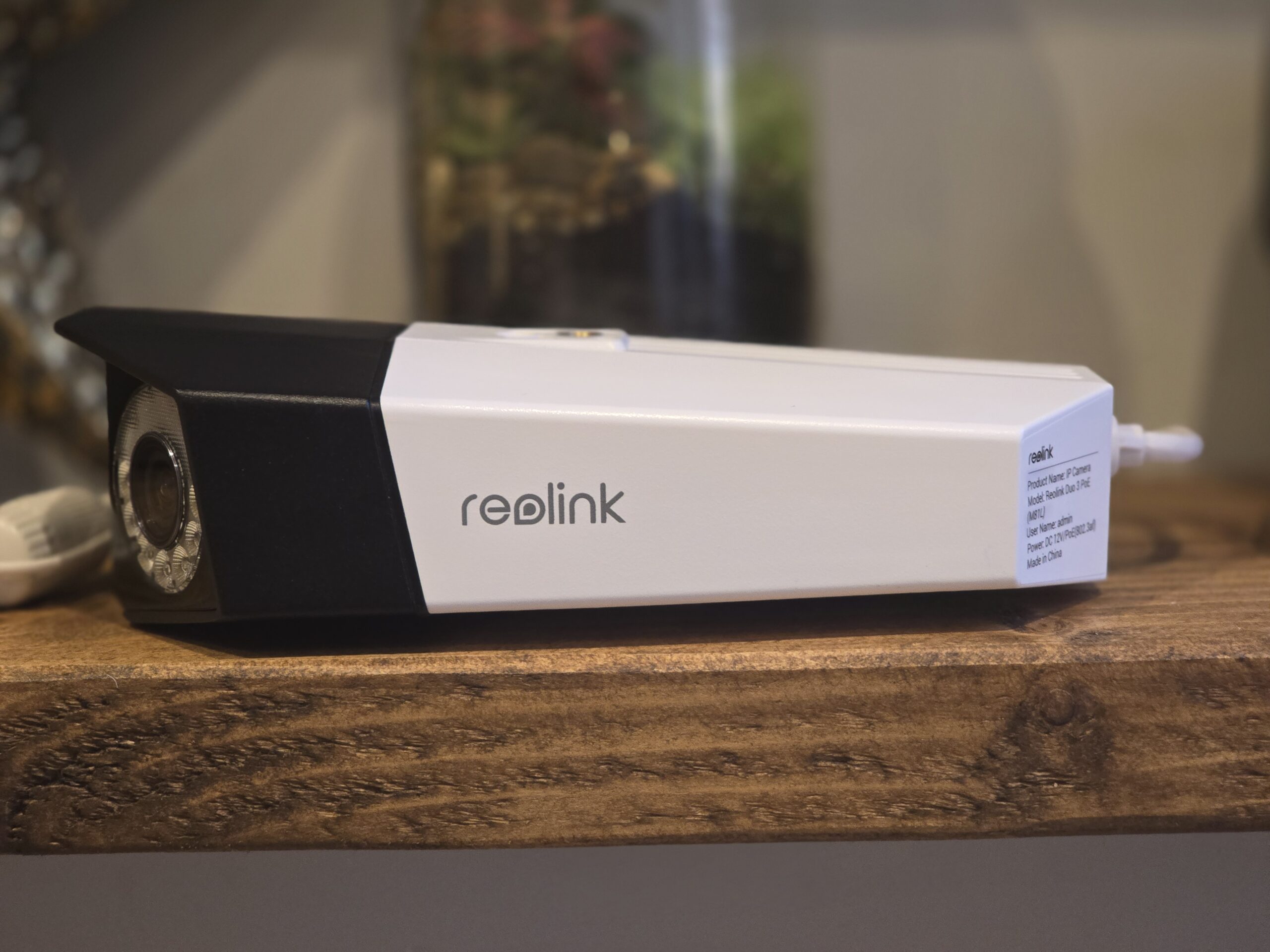The new Reolink Duo 3, announced at CES 2024, brings a welcome boost in image quality over its predecessor. Retaining the dual-lens design for 180° coverage, Reolink has upped the resolution significantly to 4608×1728. Let’s see how else it differs from the Duo 2.
Key Specs
The standout upgrade is the 16MP sensor, capturing 7680×2160 at 20FPS – over double the pixel density of the Duo 2’s 8MP sensor. The Duo 3 also boasts a higher IP67 rating versus IP66 on the Duo 2. Meanwhile, object detection sees tweaks like recognising more animals.
Clever Motion Tracking
An intriguing new feature for the Duo 3 is Motion Track. Instead of just sending an alert when motion triggers recording, Motion Track overlays a subject’s route over time into one image. Rather than keeping loads of footage, you get their full movement path in one shot. Handy for seeing an intruder’s actions without downloading reams of video.
Familiar Design
Visually identical to earlier Duos, the flat body houses two angled lenses. The same two 1/4-20 UNC threads on top and bottom allow flexible ceiling or wall mounting. On the base is the microSD slot, while the PoE version reviewed has an RF45 port needing 802.3af PoE to supply the 15.4W power draw.
Simple Set-Up
No surprises here – use the Reolink app to activate via QR code or IP address. I fired up the desktop app, which auto-detected the powered-up Duo 3. After assigning an admin password, I was good to go.
Plays Nice with NVRs
As with all Reolink cams, you can record to microSD, Reolink’s own NVR or third-party options like Blue Iris. I use a Reolink NVR now, but it’s easy to integrate, with RTSP stream URLs available under Network settings.
Familiar Features
Aside from the boosted imaging specs, most features mirror other Reolinks. The Duo 3 does bring slightly better motion detection, able to identify more animals. There’s also a Motion Mark toggle overlaying detected objects in live view – handy for catching garden visitors. The claimed Motion Track feature for showing a subject’s path across multiple cams doesn’t appear active currently.
Impressive Daytime Footage
With excellent detail and number plate recognition possible across the street, the higher resolution makes itself apparent in daylight. Zoomed shots of distant street signs remain legible too.
Colour Only for Spotlight Mode
The small 1/2.7″ sensor and f/2.0 lens mean low light still brings back black-and-white footage. Reolink gets round this to some degree via the integrated 560 lumen adjustable spotlight – when triggered by motion, this kicks in alongside a colour image. Avoiding full glare is tricky with nearby objects, but it works well. Still, true colour night vision found on some Hikvision and Annke cams remains absent.
Worth the Upgrade?
At £180 RRP, the Reolink Duo 3 costs about £40 more than its predecessor. Key rivals like the Annke FCD600 with full colour night vision undercut it at $80, albeit with lower resolution and a less polished app. Hikvision’s 5MP panoramic ColorVu dome sits at £320 – better for commercial installs but overkill for home use.
While I’d like to see Reolink catch up with colour night vision tech, the Duo 3 still makes a compelling case. Its crisp new sensor takes an already innovative dual-lens design up a notch. For home CCTV that balances wide coverage and high detail at a fair price, the Duo 3 looks hard to beat.

